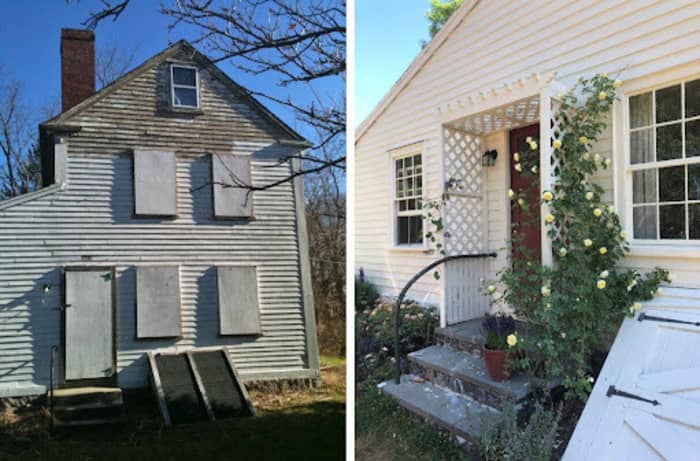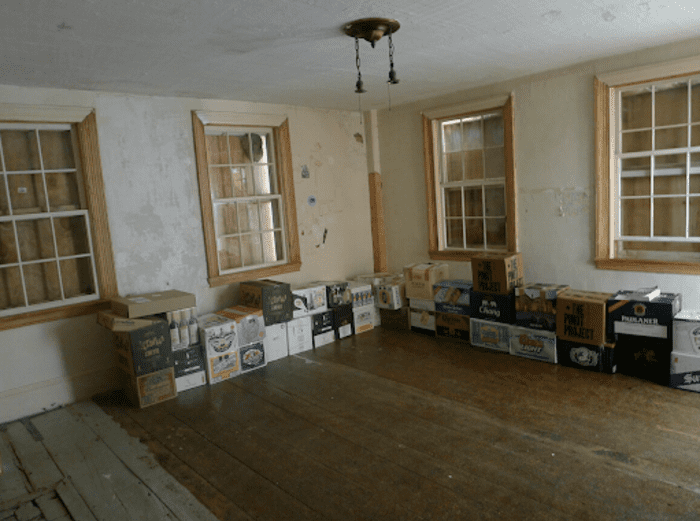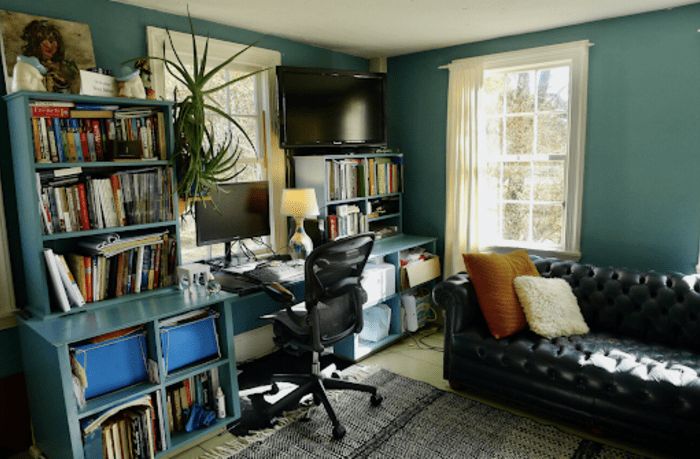This post was originally published on this site
This article is reprinted by permission from The Escape Home, a newsletter for second homeowners and those who want to be. Subscribe here. © 2021. All rights reserved.
Maureen Clarke and Kevin Kaminski were looking to buy a fixer-upper in Brooklyn in 2008 when they came across an article on resident curator programs. Curious, they learned more about the public-private partnerships that operate in several states in the eastern part of the country, including Maryland, Connecticut, Vermont, Delaware, Virginia and Massachusetts.
How do they work? Resident or historic curators — individuals or commercial and nonprofit entities — receive a long-term lease on a publicly owned historic building in exchange for restoring the property and providing ongoing upkeep.
“In terms of priorities for annual budgeting, putting money into vacant historic buildings isn’t always a high priority, so it’s a funding challenge, but it’s also an use challenge,” said Kevin Allen, who has managed Massachusetts’ program for the past 15 years. “We can preserve a building that’s four walls and looks great — and we do that sometimes —but to really keep a building alive it needs to be occupied.”
After doing some research, the couple felt they had found their calling, and that with Kaminski’s skills — he had previously worked on a house in Easton, Pa. for several years that won an award from the National Trust for Historic Preservation — they would be ideal candidates. Once they realized no such programs existed in New York or New Jersey, they set their sights on Massachusetts, which had the “motherload” of properties.
“We would download the park maps that showed where these various houses were that interested us from the [Department of Conservation and Recreation] website and we would just go visit them on the weekends and peer in the windows and scout out the property, it was like going on a treasure hunt,” Clarke said. “One after another was too far gone, too water damaged, too much work.”

A before and after of the Dodge House.
Maureen Clarke
Eventually, they fell in love with a little clapboard building known as the Dodge House, set south facing on a hill in Bradley Palmer State Park in the town of Hamilton.
“We could just see past the dilapidation to know that it was going to be gloriously sunny once the boards were off the windows,” she said.
Applying to be a resident curator is a laborious process — it took Clarke and Kaminsky roughly two years to get their lease on the Dodge House. And competition was stiff; according to Allen, the Dodge House received the most “legitimate” proposals his office has ever seen: four. Many of the properties listed don’t receive any bids at all due to their condition.
“It’s one thing to watch HGTV and think ‘oh I’m going to sand the balusters on the weekend,’ and then you step into the house and see the raccoon guano hanging out of the ceiling and suddenly your romantic interests are crushed,” Allen said. “It really is a trial by fire.”
Curators are chosen through a competitive process where they are evaluated based on the quality of their proposed reuse, the strength of their rehabilitation plan, their experience, qualifications and financial capability, their overall presentation and organization, as well as the scope and nature of their public benefit element. Typically for the latter, curators hold an open house one to two times per year.
And while many people are initially enticed by the idea of “free rent,”being a resident curator is anything but.
In Massachusetts, where leases range from 10 to 50 years, Allen estimated that resident curators of single-family properties spend roughly $500,000 to $1 million over time on restoration and upkeep. Stephanie Langton, who manages the resident curator program for the Fairfax County Park Authority in Virginia, said that her resident curators tend to spend between $150,000 to $400,000 over the course of their 10 to 20 year leases.

A room in the Dodge House prior to renovations.
Maureen Clarke
The benefit to states is immense; in Massachusetts, which currently has 24 properties under lease, overall outside investment in historic properties is at more than $38 million since the program created by legislation in 1994.
While much of the heavy lifting is done for Clarke and Kaminsky, improvements and maintenance are an ongoing process. Clarke, whose ultimate dream is to get the house onto renewable energy, has in the meantime turned her attention to eradicating invasive species and restoring native plantings throughout their 1.33-acre property.

That same room, post-renovation.
Maureen Clarke
“It’s a lot, but we love it,” she said. “We’re adventurous; it’s not for everyone.”
Resident curators tend to be a very specific subset of people, according to Allen.
“It’s the ultimate needle in the haystack; everything has to line up and even if you make the numbers line up, at the end of the day, every single one of our curators has a deeply emotional connection to the property,” he said. “To be able to benefit from your own skills, expertise and sweat equity is another kind of lifestyle that a lot of our curators have been really fascinated with.”
Massachusetts is currently seeking expressions of interest for two properties. The Fairfax County resident curator program has several homes that they will begin accepting applications for soon. To learn more about Clark and Kaminski’s journey as resident curators, visit their website.
This article is reprinted by permission from The Escape Home, a newsletter for second homeowners and those who want to be. Subscribe here. © 2021. All rights reserved.


